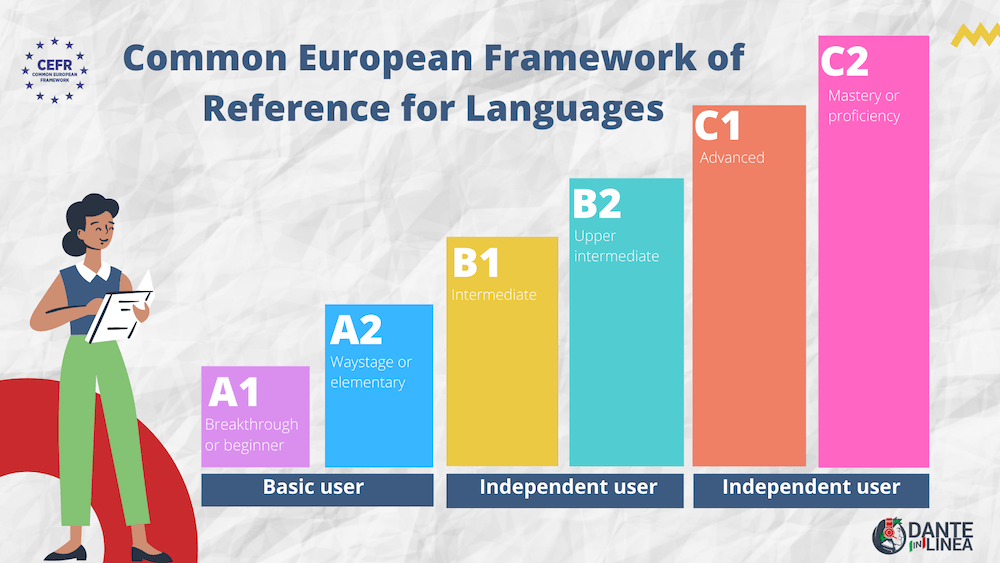Common European Framework of References for Languages (CEFR)
The Common European Framework of Reference for Languages (CEFR) is a global standard for describing language proficiency. It assigns a six-point scale to language ability, ranging from A1 for beginners to C2 for those who have mastered a language. This allows anyone involved in language teaching and testing, such as teachers or students, to quickly determine the level of various qualifications. It also means that employers and educational institutions will be able to easily compare our credentials to those of other exams in their country.
Where did the CEFR come from?
The CEFR was developed in the 1990s by the Council of Europe as part of a larger effort to promote collaboration among language teachers across all European countries. The Council of Europe also wanted to make it easier for employers and educational institutions to assess candidates’ language skills. The framework is intended to be used in both classroom instruction and assessment.
The CEFR is a collection of can-do statements that list the functions you will be able to perform using a foreign language at any given level of proficiency, rather than being tied to a specific test. “Can produce simple connected text on topics that are familiar or of personal interest,” for example, is one of the levels B1 can-do statements. These can-do statements can be used by a foreign language teacher to evaluate you and design lessons to address the gaps in your knowledge.
Why is the CEFR important?
In Europe, the CEFR is increasingly being used to describe your level of proficiency in a foreign language, particularly in an academic setting. If you have studied more than one language, the CEFR is a convenient standardized way to present two or more languages on your CV.
The CEFR is the European Union’s standard framework for school and university education and can be used without reservation.
Who uses the CEFR?
The CEFR is widely used in language teaching, both in public schools and in private language schools. It has largely replaced previous leveling systems in foreign language teaching in many countries. Most European education ministries have an explicit CEFR-based goal for all students graduating from secondary school, such as B2 in their first foreign language and B1 in their second.
Many European adults use standardized test scores, such as the CILS, CELI, PLIDA, to describe their Italian level when applying for jobs.
The CEFR is also being adopted outside of Europe, with some individual countries in Asia and Latin America incorporating it into their education systems.
What are the Different CEFR Levels?
The six levels within the CEFR are A1, A2, B1, B2, C1, and C2. These six reference levels are widely accepted as the European standard for grading an individual’s proficiency in around forty different languages. Each level is divided into four kinds of competencies (language skills), describing what a learner is supposed to be able to do in reading, listening, speaking, and writing.
Let’s first take a look at what the different levels are and what’s possible for you at each level.

The “A” Levels: Basic User
A1 | Beginner
At the A1 CEFR level, a language learner can:
- Understand and use very basic expressions to satisfy concrete needs.
- Introduce themselves and ask others questions about personal details.
- Interact simply as long as the other person speaks slowly and clearly.
A2 | Elementary
At the A2 CEFR level, a language learner can:
- Understand frequently used expressions in most intermediate areas such as shopping, family, employment, etc.
- Complete tasks that are routine and involve a direct exchange of information.
- Describe matters of immediate need in simple terms.
The “B” Levels: Independent User
B1 | Intermediate
At the B1 CEFR level, a language learner can:
- Understand points regarding family, work, school, or leisure-related topics.
- Deal with most travel situations in areas where the language is spoken.
- Create simple texts on topics of personal interest.
- Describe experiences, events, dreams, and ambitions, as well as opinions or plans in brief.
B2 | Upper-Intermediate
At the B2 CEFR level, a language learner can:
- Understand the main ideas of a complex text such as a technical piece related to their field.
- Spontaneously interact without too much strain for either the learner or the native speaker.
- Produce a detailed text on a wide range of subjects.
The “C” Levels: Proficient User
C1 | Advanced
At the C1 CEFR level, a language learner can:
- Understand a wide range of longer and more demanding texts or conversations.
- Express ideas without too much searching.
- Effectively use the language for social, academic or professional situations.
- Create well-structured and detailed texts on complex topics.
C2 | Proficiency
At the C2 CEFR level, a language learner can:
- Understand almost everything read or heard with ease.
- Summarize information from a variety of sources into a coherent presentation.
- Express themselves using precise meaning in complex scenarios.
When do the Different CEFR Levels Matter?
The CEFR is often used by employers and in academic settings.
You may need a CEFR certificate for:
- School admissions
- University course requirements
- Employment
- Italian citizenship by marriage
A CEFR certificate is very handy for your CV or résumé, and they often don’t expire.
Lates post



